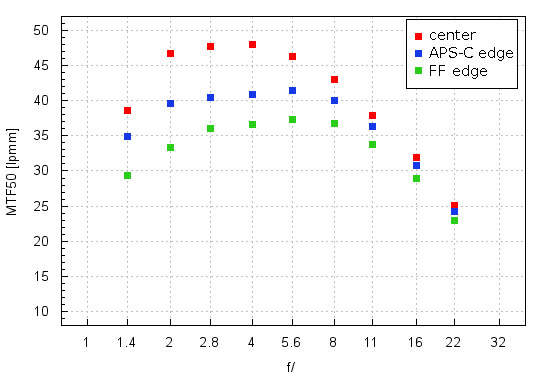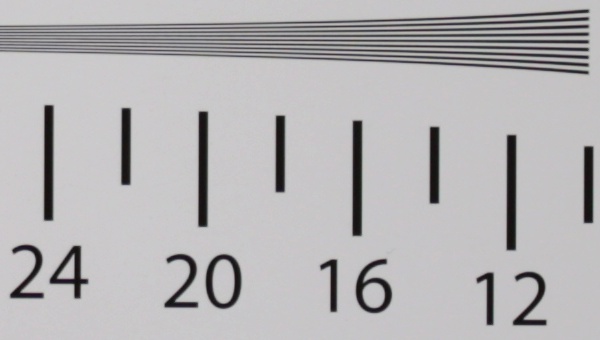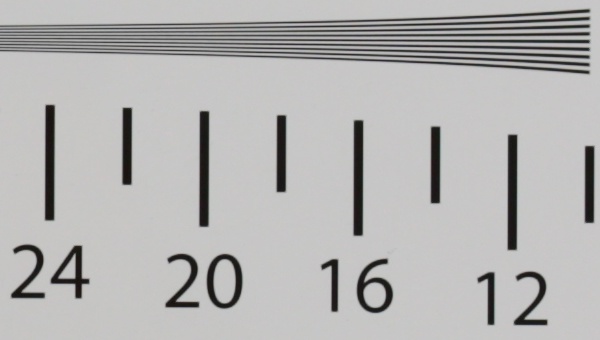Canon EF 35 mm f/1.4L II USM
4. Image resolution
Let’s check how the tested lens compares – its results in the frame centre, on the edge of the APS-C/DX sensor and on the edge of full frame presents a graph below.

Please Support UsIf you enjoy our reviews and articles, and you want us to continue our work please, support our website by donating through PayPal. The funds are going to be used for paying our editorial team, renting servers, and equipping our testing studio; only that way we will be able to continue providing you interesting content for free. |
- - - - - - - - - - - - - - - - - - - - - - - - - - - - - - - - - - - - - - - - - - - - - - - -
In a nutshell we have a new record. By f/4.0 the tested Canon reached 48.0 lpmm with a margin of error amounting to 0.3 lpmm. It is officially a result higher than that of the Otus and the Sigma but it must be stated very clearly that the best results of all those three lenses interlock within the margin of error.
The MTFs produced by the tested Canon in the frame centre are indeed impressive – we mean here not only an excellent result of almost 39 lpmm, reached at the maximum relative aperture but also the performance by f/2.0 and f/2.8 with resolution values soaring to near 47 lpmm. Here the advantage of the Canon over the Sigma seems to be the most pronounced as the latter by f/2.0 could go only as high as near 45 lpmm.
The performance on the edge of the APS-C should be also described in superlatives only. Already at the maximum relative aperture the MTFs increase to a good level of 35 lpmm. Additionally in a wide range of apertures, from f/2.0 to f/8.0, the results keep a very high level of near 40 lpmm.
Only when you start to analyze the performance at the most difficult combination of the edge of full frame and the maximum relative aperture you find the first, very small stumble. MTFs of the tested lens at that point are of 29.4 lpmm so a bit under the decency level. Still it’s worth reminding that the Sigma A 1.4/35, so praised by us, was even worse, reaching just 28.1 lpmm. In the case of the Canon even the slightest stopping down to f/1.6 -1.8 makes the image completely useful. What’s more, near f/4.0 – 5.6 the results are able to get to 36-37 lpmm so about 3 lpmm higher than the respective level reached by the Sigma.
To sum up we don’t doubt the Canon EF 35 mm f/1.4L USM II is the best 35 mm instrument we’ve happened to test so far and also one of the sharpest lenses in history – a round of applause for its constructors!
It is already a tradition that we end this chapter with crops of our resolution testing scene, taken from the frame centre. It’s worth reminding here that these are crops taken from JPEG files which were saved along RAW files we analyzed and described above.
| Canon 5D Mk III, JPEG, f/1.4 |
 |
| Canon 5D Mk III, JPEG, f/4.0 |
 |






